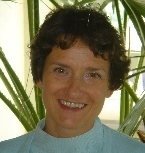Tuesday, October 31, 2006
Cytyc Acquires Minimally Invasive Surgical Device For Treating Endometriosis
Marlborough, MA — Cytyc Corporation, a provider of medical technology, announced that it has purchased certain assets of Helica Instruments Limited (“Helica”), including the Helica Thermal Coagulator (HTC) System developed and manufactured by Helica, a privately held company based in Edinburgh, Scotland. The HTC System is used by obstetricians and gynecologists for the treatment of endometriosis. Cytyc intends to develop a second-generation product for worldwide product launch in 2008. Under the terms of the agreement, Helica will receive an up-front payment of $1 million and a two-year earnout based on sales of the next generation product. Total consideration under the agreement will not exceed $9 million.
“We believe that this technology offers an exciting opportunity to extend our portfolio of therapeutic products and leverage our OB/GYN sales infrastructure, which has been a critical element in the success we have achieved with the NovaSure® Endometrial Ablation System,” said Daniel J. Levangie, president of Cytyc’s surgical products division. “Clinical studies in the United Kingdom have shown HTC to be safe, easy to use, and as effective as other surgical treatment techniques for endometriosis, a disease estimated to affect 30 percent of women in their child-bearing years.”
Approved by the Food and Drug Administration (FDA), the HTC is a thermal ablation system that uses an ionized helium gas plasma plume to provide safe and effective treatment of endometriosis. The HTC System, currently in use in select European markets, performs a controlled ablation of tissue associated with endometriosis without affecting surrounding tissue. The system, used during open and laparoscopic surgery, includes a controller and disposable probes. Endometriosis affects an estimated 7 million women in the United States and approximately 16 million women worldwide.
SOURCE: Cytyc Corporation
Endometriosis / Clinical Trials
1.
Not yet recruiting
The Immune Base of EndometriosisCondition: Endometriosis
2.
Recruiting
Effects of Endometriosis on Bone Mineral DensityCondition: Endometriosis
3.
Recruiting
Pelvic Pain in Women With EndometriosisConditions: Endometriosis; Pelvic Pain; Healthy; Tubal Ligation
4.
Recruiting
Medical Treatment of Endometriosis-Associated Pelvic PainConditions: Endometriosis; Pelvic Pain
5.
Recruiting
Effect of Rosiglitazone on Peritoneal Cytokines in Women With EndometriosisCondition: Endometriosis
6.
Recruiting
Use of Rosiglitazone in the Treatment of EndometriosisCondition: Endometriosis
7.
Recruiting
A Multinational, Randomized, Double-Blind, Placebo‑Controlled, Parallel Group Study to Investigate the Efficacy, Safety and Duration of Effect of a Single Administration of Various Doses of Cetrorelix SR in Subjects With Histologically Confirmed EndometriosisCondition: Endometriosis
8.
Recruiting
Evaluation of DR-2001 for the Management of Endometriosis-Related Pelvic PainCondition: Endometriosis
9.
Recruiting
Study Evaluating the Safety and Efficacy of ERB-041 on Reduction of Symptoms Associated With Endometriosis in Reproductive-Aged WomenConditions: Dysmenorrhea; Dyspareunia; Endometriosis; Pelvic Pain
10.
Recruiting
Safety and Efficacy of SH T00660AA in Treatment of EndometriosisCondition: Endometriosis
11.
Recruiting
Study to Investigate the Efficacy of a Non-Hormonal Drug Against Endometriosis Associated Pelvic PainCondition: Endometriosis Associated Pelvic Pain
12.
Recruiting
Use of Arimidex and Zoladex as Pretreatment to IVF in Women With Ovarian EndometriosisCondition: Endometriosis
13.
Recruiting
Evaluation of Endometrial Stromal Cell Apoptosis in AdenomyosisCondition: Endometriosis
14.
Recruiting
Progestin Treatment for Endometrial Stromal Cells in AdenomyosisCondition: Endometriosis
15.
Recruiting
Acupuncture for Women's Health ConditionsConditions: Ovarian Neoplasms; Endometriosis; Pelvic Pain; Uterine Neoplasms
16.
Recruiting
'SPRING'-Study: "Subfertility Guidelines: Patient Related Implementation in the Netherlands Among Gynaecologists"Conditions: Male Infertility; Female Infertility; Ovarian Hyperstimulation Syndrome; Premature Ovarian Failure; Endometriosis
17.
Recruiting
Health-Related QoL Among Women Receiving Hysterectomy in NTUHConditions: Leiomyoma; Adenomyosis
18.
Recruiting
Uterine Artery Embolization for Symptomatic FibroidsConditions: Uterine Fibroids; Menorrhagia; Adenomyosis
19.
Recruiting
Treatment of Uterine Fibroids With the Selective Progesterone Receptor Modulator CDB-2914Conditions: Leiomyomata; Uterine Leiomyomata; Fibroids
20.
Not yet recruiting
PTEN and IGFBP-3 Correlation in Ovarian Carcinoma InvasionCondition: Ovarian Cancer
Monday, October 30, 2006
Endogyn's "Most Wanted" Contest ~ Courtesy of ARDvark Blog


"2006 – 2007 ENDOGYN'S MOST WANTED"
A real game of "I SPY" on the International curcuit of mystery and intrigue!
With REAL prizes!!
YOU get to "SHOOT" those who are responsible for the maiming of hundreds of innocent patients harvetsed to "Endogyn - Germany" from 2003 - 2006 by the people seen below here! If YOUR photo shows up in IHRT, YOU win a prize!
Now Presenting "Endogyn's Most Wanted"

"Doc." Kru aka Daniel Kruschinski
Car license: PA EG 226
Link to phoot of his rentalcar! http://ihrt.blogspot.com/
Last known whereabouts:
im Maritim Stadthotel Hannover
Hildesheimer Strasse 34–40
30169 Hannover (Germany)
Phone: +49 180 36 36 496

If "Kru" is seen with a "scalpel" consider him
"Armed and Dangerous!"
He will most likely be found "drunk" or exhibiting "freaky" behaviors! He is ussually found to be "out of control" throwing "temper tantrums," in public so watch out! Definetly is "crazy," this one is!
~~~~~~~~~~~~~~~~~~~~~~~~~~~~~~~~~~~~~~~~~~
 Michaela Katzer Passauer Straße 22, 94095 Rotthalmuenster
Michaela Katzer Passauer Straße 22, 94095 Rotthalmuenster
Risque' reputation, shows lots of skin in public. Masquerades as a nurse, born in East Germany! Might be worth your while to contact as she is single again!
~~~~~~~~~~~~~~~~~~~~~~~~~~~~~~~~~~~~~~~~~~~~
 Harry Reich USA
Harry Reich USA#3 Crestview Dr.
Shrine Acres
Dallas, PA 18708

Director of Endogyn! Never stopped the mad "Doc" Kru from harming patients over a three year period. Owes patients and investors money!
~~~~~~~~~~~~~~~~~~~~~~~~~~~~~~~~~~~~~~~~~~~~~~~~~~~
Helen Dynda USA
411 1st St N
Hoffman, MN 56339-4505
Tel.: (320) 986-2898
olddad66@runestone.net
It appears that Helen harvested patients to surgeries at Endogyn with lies, mis-information, posting bogus information in Endogyn! Never told patients SHE had returned there for more then one surgery, instead she let patients think she was well from her first surgery with "Kru!" Her crime is in her silence! It is IHRTs opinion that she has no ethics, morals or scruples when doing "Kru's" bidding, and she continues to do yet today! Probably knows Kru's where-a-bouts as they both visit IHRT at the same times!
Map:
http://maps.yahoo.com/py/maps.py?addr=411+1st+St+N&city=Hoffman&state=MN&zip=56339-4505
~~~~~~~~~~~~~~~~~~~~~~~~~~~~~~~~~~~~~~~~~~~~~~~~
Ms. Jutta Lottz -
Seligenstadt, Germany
Has a reputation of "enjoying" the company of men on a frequant basis, "Kru" also took advantage of her "issue." He said so himself! Might be worth your while to look this one up for more then just photos!
~~~~~~~~~~~~~~~~~~~~~~~~~~~~~~~~~~~~~~~~~~~~~~~~
BIG PRIZE for a"face"picture of: Karen Steward
Mother of a patient that Kru said he gave a car too! This "mother" went berserk over Kruschinski for 3 years, and was obsessed with him! She lied, chastized, intimidated and taunted patients for NOT going to Endogyn, then did the same thing if patients who went there were not well and tried to state that! Definately the "Wicked Witch" of the west!
 (Though IHRT is not certain of this, it appears that she had "plastic surgery" from Kru, who claims to be a "plastic" surgeon in breast reconstrution!) You might want a "wide" lens for this shot! )
(Though IHRT is not certain of this, it appears that she had "plastic surgery" from Kru, who claims to be a "plastic" surgeon in breast reconstrution!) You might want a "wide" lens for this shot! )
Karen Steward -USA
931 Upper Denton Road,
Weatherford, TX 76085
1(817)341-3000
email:kann@charter.net
http://adhesionanswers.blogspot.com/
~~~~~~~~~~~~~~~~~~~~~~~~~~~~~~~~~~~~~~~~~~~~~~~~
A couple of "ENDOGYN Jokers" who led many to slaughter!
Sally Grigg USA
40501 North Highway One PO. Box 121, Westport, California 95488 (707) 964-6725 email: howardcreekranch@mcn.org Photo of Sally: http://www.holidayjunction.com/usa/ca/cca0112a.html
Both Sally Grigg (above) & Lisa Gravens (below) harvested patents to surgery at ENDOGYN by conveniently "forgetting" to mention that they had returned for multiple operations with "Doc" Kru, instead, they let patients secure operations there thinking that these two were well after only ONE operation ay Endogyn! Only ONE of thier crimes is in thier silence...they also lied, initmidated, chastized and were terribly cruel to patients who were not well after operations with "Kru," along with publically challenging the patients if they wanted to share the truth about Endogyn! (Even after "Kru" called Lisa a "drunk" and "drug addict" in a public post by himself on ENDOGYN, Lisa posted her allegiance to him!)
 Lisa Gravens USA Maumee, Ohio +1 (419) 893 5645 (home) +1 (419) 346 7547 (cell phone) email: Lilylover5555@aol.com
Lisa Gravens USA Maumee, Ohio +1 (419) 893 5645 (home) +1 (419) 346 7547 (cell phone) email: Lilylover5555@aol.com
~~~~~~~~~~~~~~~~~~~~~~~~~~~~~~~~~~~~~~~~~~~~~~~~~~
ALL of the people above took gross advantage of helpless,  vulnerable and suffering patients by harvesting them to "ENDOGYN" - Germany for experimental operations by a “Psycho Surgeon!”
vulnerable and suffering patients by harvesting them to "ENDOGYN" - Germany for experimental operations by a “Psycho Surgeon!”
** These operations were performed WITHOUT the patient knowing they were really experiments, but rather were told that the surgeon had performed them 3000 times before and that the surgeries were tested and safe with 95% - 100% success!** Some patient were cut nearly in half in botched operations at Endogyn, others were so horribly scarred, both internally and externally, that they live in agony and disfigurement!
** Many, far to many, patients harvested to Endogyn, were lead to believe that they had to return time and again to "Doc. Kru" as no other surgeons would touch them after he butchered them up!
** Every patient to Endogyn was lied to, frauded, received bogus information, and was left to suffer in some way for the experience at ENDOGYN!
** Patients cannot recup any monies from "Doc.Kru" as there was/is no money trail! ** By collecting his "services" in cash, "Doc Kru" hide his assets so well, that there remain few to no records of the patients financial transactions with him.
** "Doc. Kru" even performed some operations while he was "drunk!"
** "Doc. Kru's" operations not only lead to patients suffering horrible non reversable surgeries, but left them financialy broke as well!
Join our crusade NOW and become a real "International Spy" to expose these people so others might be saved the same horrible fate as the patients to Endogyn - Germany suffered!!
IHRT will NOT let them get away with what they have done to trusting patients without being remineded everyday of the rest of thier lives of what they did to the patients!
This is no joke, but a REAL contest with REAL prizes...as IHRT exposes those on the most "wanted" list, so grab your cameras and start hunting, if you see any of the "Endogyn" staff, SHOOT!
Send your photos to: investigter1@yahoo.com
OR
Share put your photo on your web site and list the"link" on: investigter1@yahoo.com
IHRT will go check out your photo!
Remember.. leave your contact information to collect your prize if your photo is seen on IHRT!
Catch them in your camera lens, and WIN BIG!
Many are already doing this and loving it! "I Spy!" starts NOW..... 
Notice:
Persons associated with IHRT are not eligable to submit photos or win prizes!
Endometriosis can afflict young women, too
By Judy Foreman October 30, 2006
Christina Shimek , a senior at St. Bernard's High School in Fitchburg, is only 17, but she has already felt more pain than many adults have in a lifetime.
A year ago, Shimek, who lives with her parents in Leominster, said she woke up one morning "in excruciating pain in my lower back and pelvic area. I was in tears." Frantic, her parents took her to the hospital, where doctors assumed that the trouble was her appendix and took it out. It turned out to be normal.
The pain persisted. She missed school for four months, had to repeat chemistry, and missed an important rite of passage, her "junior ring ceremony," in which students get their class rings. She went to two doctors, who "were both baffled," she said. Finally, a nurse suggested endometriosis, a diagnosis that was confirmed by surgery.
Historically, endometriosis -- in which tissue from the lining of the uterus, called the endometrium, escapes and lodges in other areas -- has been thought of as a problem of adult women.
According to the National Institutes of Health, 5.5 million women in North America have endometriosis; there is no cure, but pregnancy can sometimes trigger a lasting remission, and the disease often gets better at menopause. The disease causes infertility in 30 to 40 percent of women who have it.
Two-thirds of adults with endometriosis began getting symptoms before age 20, and endometriosis is increasingly being found in young women as well.
It's hard enough for any woman, adult or teenager, to get a correct diagnosis of endometriosis because there are so many other causes of abdominal pain, including appendicitis, bowel disease, and pelvic inflammatory disease. In fact, it takes an average of nine years for most adult women to get a correct diagnosis, according to a review published last year by the American College of Obstetricians and Gynecologists.
But while adult women typically have two to three doctor visits before they get diagnosed, it takes more than four visits on average for teens whose symptoms began before age 15, partly because endometriosis in young women is still not on the radar screen for many doctors.
Read all about it
Sunday, October 29, 2006
Solace founder finds 'pain gene'
Boston's Solace Pharmaceuticals Inc.'s co-founder, Clifford Woolf, has published a paper in the journal Nature Medicine about his discovery of a molecule linked to pain, official said.
The molecule, called BH4, is activated during painful states. And by inhibiting the human "pain gene" that produces BH4, scientists have been able to reduce pain, according to company officials.
Executives said that the findings in the paper would aid in its development of new pain treatments with limited side-effects.
Founded in March 2006 by scientists and backed by Boston tech-finance firm PureTech Ventures, which also manages the company, privately held Solace is in development of treatments for chronic pain.
http://www.bizjournals.com/masshightech/stories/2006/10/23/daily7.html?b=1161576000^1364753
National Study of Women with Physical Disabilities--Final Report
Final Report 1992-1996
Margaret A. Nosek, Ph.D., Principal Investigator
Center for Research on Women with DisabilitiesDepartment of Physical Medicine and RehabilitationBaylor College of Medicine
Major Findings
1. Women with disabilities have limited opportunities to establish romantic relationships.
Compared to women without disabilities, women with disabilities were less satisfied with how often they date and perceived more constraints on attracting dating partners.
Even when women with disabilities were outgoing with strong social skills and many friends, their friendships were less likely to evolve into romantic relationships than for able-bodied women.
The large majority (87 percent) of the women with disabilities had had at least one serious romantic relationship or marriage. Fifty-two percent were involved in a serious relationship at the time of the study versus 64 percent of the women without disabilities.
Among the women with disabilities who were not married or in a serious relationship at the time of the study, 42 percent said it was because no one had asked them. Only 27 percent of women without disabilities listed that as a reason for not being in a relationship.
More than half of the women with disabilities believed that disability was not a major cause of the ending of a marriage or other serious relationship.
Only 38 percent of the women with disabilities in this sample had borne children compared to 51percent of women without disabilities.
Women with disabilities were significantly more likely than those without disabilities to stay in a bad marriage for fear of losing custody of their children.
2. Self-esteem in women with physical disabilities is more strongly influenced by social and environmental factors than by the fact of having a disability.
More than three-quarters of the women with disabilities had high self-esteem and a positive body image. Whether the woman had a severe disability or a mild disability, incurred disability earlier or later in life, or had ever been in special education didn't make much difference in self-esteem.
Women who were working, who were in a serious romantic relationship, or who had never experienced physical or sexual abuse reported high self-esteem, whether or not they had a disability. Among women who were not working, not in a serious romantic relationship, or who had experienced physical or sexual abuse, the women with disabilities had much lower self-esteem than the women without disabilities.
3. Abuse is a very serious problem for women with disabilities. They have even fewer options for escaping or resolving the abuse than women in general.
The same percentage (62 percent) of women with and without disabilities had experienced emotional, physical, or sexual abuse, but women with disabilities experienced abuse for longer periods of time.
In addition to the types of abuse experienced by all women, women with disabilities were sometimes abused by withholding needed orthotic equipment (wheelchairs, braces), medications, transportation, or essential assistance with personal tasks, such as dressing or getting out of bed. Women with disabilities face serious barriers to accessing existing programs to help women remove violence from their lives.
4. Women with physical disabilities have as much sexual desire as women in general; however, they do not have as much opportunity for sexual activity.
Ninety-four percent of the women with disabilities had had sexual activity with a partner in their lifetime. Forty-nine percent were sexually active at the time of the study, compared to 61 percent of women without disabilities.
Forty-one percent of the women with disabilities believed that they did not have adequate information about how their disability affects their sexual functioning.
Women with disabilities reported significantly lower levels of sexual activity, sexual response, and satisfaction with their sex lives.
Level of sexual activity was not significantly related to severity of disability.
5. Women with physical disabilities encounter serious barriers to receiving general and reproductive health care.
Thirty-one percent of the women with physical disabilities who participated in this study were refused care by a physician because of their disability.
Women with physical disabilities reported considerable difficulty locating physicians who were knowledgeable about their disability to help them manage their pregnancy.
More women with physical disabilities reported chronic urinary tract infections, heart disease, depression, and osteoporosis at younger ages than the comparison group of women without disabilities.
There was a much higher rate of use of public health clinics, specialists, and emergency departments among women with disabilities compared to women without disabilities.
Description of the Sample
A total of 946 surveys were returned to us; however, some were not completely filled out. Also, some were completed by women who did not meet all the eligibility criteria for the study, that is, they were not between the ages of 18 and 65, or they had a disability that was not mobility-related, such as blindness or deafness. One survey had to be eliminated because it was completed by a man! Analyses were conducted on 881 questionnaires received from 475 women with disabilities and 406 able-bodied women who made up the comparison group.
The women who participated in this study represent every part of the United States and a wide variety of personal, social, and demographic characteristics. The women with and without disabilities in this sample were of similar racial background and socioeconomic status. The women without disabilities, however, were slightly younger, with an average age of 39 years compared to 42 years for the sample of women with disabilities.
Women with disabilities in this sample had the following characteristics. The most common primary disability type was spinal cord injury (26 percent), followed by polio (18 percent), neuromuscular disorders (12 percent), cerebral palsy (10 percent), multiple sclerosis (10 percent), joint and connective tissue disease (8 percent), and skeletal abnormalies (5 percent). Nearly half of the sample (49 percent) had disabilities since childhood (0-11 years old), 10 percent since adolescence (12-17 years old), and 41 percent since adulthood (18 years and over). Twenty-two percent had severe functional limitations, 52 percent had moderate disabilities, and 26 percent had mild disabilities.
Eighty-two percent were white, 9 percent African-American, 4 percent Hispanic, 2 percent Native American, and 2 percent Asian. Those living in urban or suburban areas comprised 89 percent of the sample, with 11% living in small towns or rural areas.
The sample was well educated, with 53 percent of the women with disabilities and 42 percent of the women without disabilities having college degrees. Fifty-nine percent were working for a salary part time or full time, compared to 86 percent of women without disabilities. The median annual personal income of the sample of women with disabilities was $15,000, with a household income of $25,000, compared to personal income for women without disabilities of $18,500 and household income of $32,000.
To read more..... http://www.bcm.edu/crowd/?pmid=1408#hc
Saturday, October 28, 2006
Autofluorescent Laparoscopy Shows Promise in Endometriosis Dx
Here's how he describes the system:
A specialized laparoscopy system was designed based upon the same general principle as fluorescence spectroscopy. In contrast to reflection, where light bounces unchanged off of a surface structure, in fluorescence the light is absorbed and then released at a different wavelength (color). When certain tissues are illuminated with light energy from short wavelength (380 - 430 nm) light, the absorbed energy is emitted as light at a longer wavelength (475-800 nm) and is observed as fluorescent light of a different color. The fluorescent light can be observed using special optical filters designed to block the background light and allow the fluorescent light to be viewed.
This fluorescence occurs in the same fashion during illumination with ordinary white light but becomes lost and invisible due to the much brighter illuminating white light. This system allows the selective visualization of the low intensity autofluorescent signals by filtering out the other bright light wavelengths that are in white light. No additional wavelengths of light are used.
Tissues illuminated with regular light emit a small amount of differently colored fluorescent light which is often not seen since the overall illuminating white light is so much brighter. By applying specific filters to the illumination light the amount of fluorescent light emitted can be maximized. By using observation filters, the large amount of illuminating light can be filtered out and the small amount of colored fluorescent light made to stand out and be more easily seen. Since connective tissues and surface epithelia have background autofluorescence (AF), pathologic lesions that grow on the surface of an epithelial layer (such as the peritoneum) may stand out compared with normal tissue when viewed in this manner by having a different light pattern than the normal tissue.
From the press release:
The system, manufactured by Karl Storz Endoscopy-America, is based on technology that has previously been used to detect lung cancer. This study represents its first use for laparoscopic examination of the pelvic and abdominal cavities in the US. It is not yet approved for general use in the US.
How the system works...
Video and add'l links...
Press release...
SOURCE: http://www.medgadget.com/archives/2006/10/autofluorescent.html
Different uterine disorders often coexist
Endometriosis is a common cause of pelvic pain in women that caused by the growth of uterine lining cells in abnormal locations, such as the ovaries. Adenomyosis is a similar disorder in which the uterine lining cells invade the deeper muscular layers of the uterus.
These two conditions may occur simultaneously in a substantial proportion of women, the authors explain, such that pelvic pain unresponsive to endometriosis surgery may be due to adenomyosis.
Dr. Pamela Stratton from the National Institutes of Health, Bethesda, Maryland and colleagues evaluated 53 women with chronic pelvic pain. Six of 40 women with confirmed endometriosis also had evidence of adenomyosis.
Only the women lacking adenomyosis showed significant improvements in pain after undergoing laparoscopic "keyhole" surgery for their endometriosis.
"Women with endometriosis also may have (uterine muscle changes), possibly indicative of adenomyosis that contributes significantly to chronic pelvic pain," the authors conclude.
They advise that women who do not have significant decreases in pain after endometriosis surgery should consider undergoing MRI testing for adenomyosis.
SOURCE: Fertility and Sterility, October 2006.
